|
Home →
Algonquin Winter Tracking
Algonquin Winter Tracking Expedition 2009
|
Tuesday (Day 3)
|
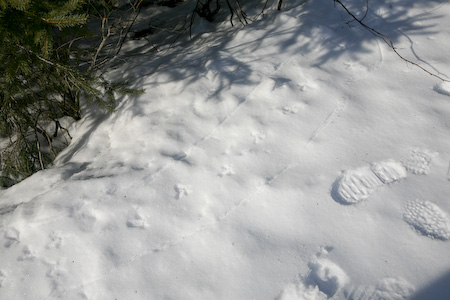 |
We hiked up Centennial Ridges Road and found these apparent wing drag marks
made by a Ruffed Grouse. |
|
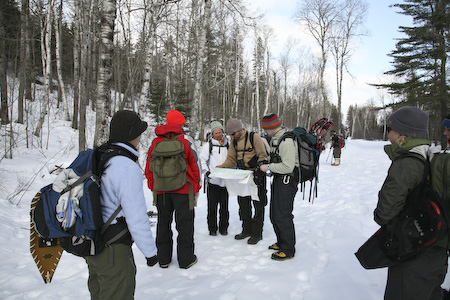 |
Some interesting tracks headed off the road to the west, so one half of the
group headed off to see where they ended up. |
|
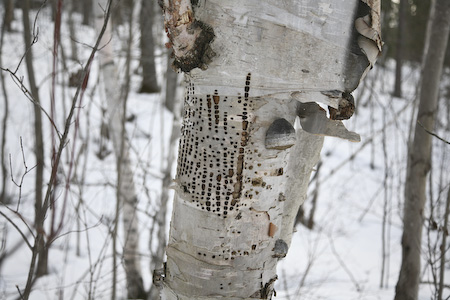 |
Sapsuckers peck holes in the bark of trees to lick up the sap that runs
out. But not in the winter. These are left from a previous year. |
|
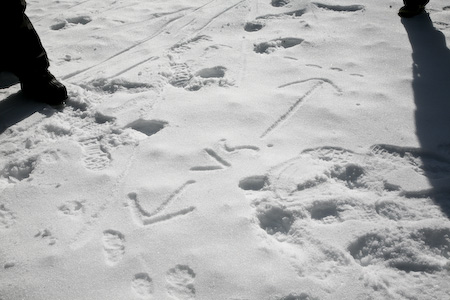 |
Fisher and Marten tracks are easily confused. you can usually only tell
them apart by their relative size. We happened upon an excellent location where tracks of both animals
were present.
In the photo the Fisher tracks are in the foreground (Fisher tracks are larger), and those of the
Marten are in the background (and their tracks are the smaller of the two animals). |
|
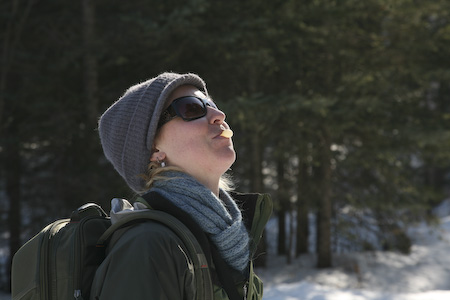 |
Most of us tried out spruce gum. A long time ago people used to chew this all
the time.
Simply harvest the hard sap that has oozed out of a spruce tree and chew it up. It rapidly assumes all
the properties of chewing gum, including the ability to blow bubbles with it! Plus it's very good for
you, being loaded with vitamin C. |
|
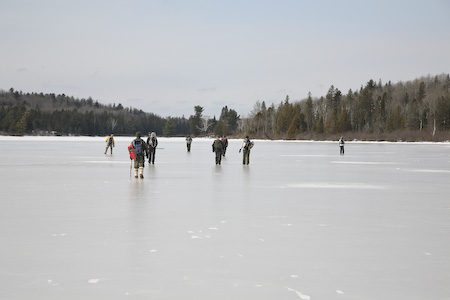 |
Heading back across a lake after lunch. |
|
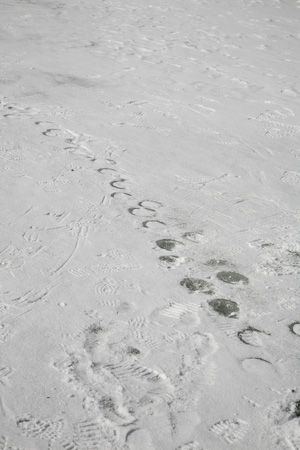 |
here sure look like horse tracks in the frozen lake surface. But they are
actually Wolf tracks made during the thaw. How could we tell? We simply followed them until we found a
clear track. |
|
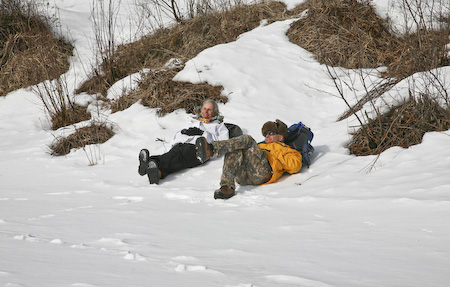 |
Catching some rays. |
|
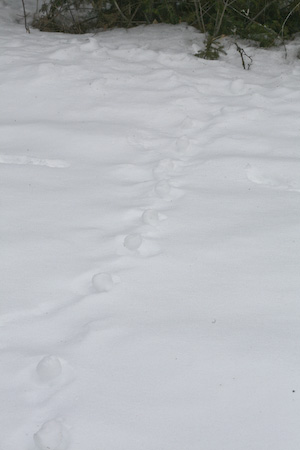 |
This was quite interesting, and shows more of the bizarre effects that can
be created by a thaw. This is a set of Red Fox tracks made when the snow was a little bit damp, before
the thaw - probably just as the thaw was starting. The weight of the fox as it walked by packed down the
snow under its paws. Then the big thaw of the previous week hit. Because the snow under the fox's tracks
was compacted and thus harder, it didn't melt as much as the surrounding snow. This left behind these
little snowballs perched above the rest of the snow where the tracks had originally been! |
|
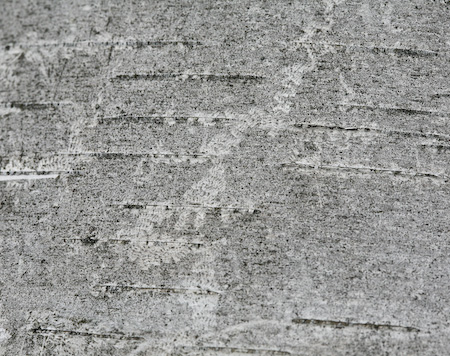 |
For a tracker, everything that moves and leaves a mark behind is trackable! Notice these tiny
marks on the bark of this white birch tree.
They are made by snail's teeth as they gnaw at the fungus growing on the bark. |
|
| |
|
Previous
Next |
|
|